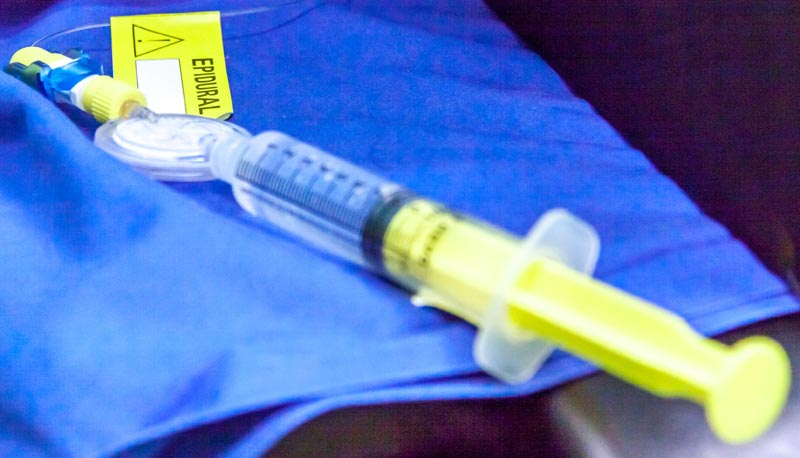Epidural anaesthetic

An epidural anaesthetic is administered to relieve pain in the case of surgical procedures performed on the kidneys, intestines and urogenital tract. It is not uncommon to combine the use of an epidural with a general anaesthetic.
This technique is quite painless. First of all, a local anaesthetic is applied to the injection point on the patient’s back. The anaesthetist then introduces a very thin and flexible plastic tube into the space above the dura mater, the so-called epidural space, using a fine hollow needle. The needle is then removed.
Once the epidural catheter is in place, a local anaesthetic is applied, which takes effect in only a few minutes. The anaesthetised area becomes warm and numb. Depending on how far the local anaesthetic extends, it is possible that you will be unable to move your legs or can only do so to a limited extent. We employ analgesic pumps with which you can administer additional painkiller in accordance with your requirements.
Risks of epidural anaesthetic
When administering morphine-like painkillers, it is occasionally possible for a patient to experience itching or nausea. In general however, circulatory reactions such as a drop in blood pressure or heart frequency can be quickly remedied. Strong headaches can occur in approx. 0.5 % of patients. In extremely rare cases, severe incidents can occur, such as a cardiac, circulatory or respiratory arrest. These can be triggered by intolerance reactions or by inadvertently injecting the local anaesthetic into a blood vessel. Another very rare occurrence is permanent paralysis (in extreme cases even paraplegia) resulting from bruising, inflammation, direct nerve injury or meningitis. For these reasons, we are extremely meticulous in the way we evaluate bleeding risks.







